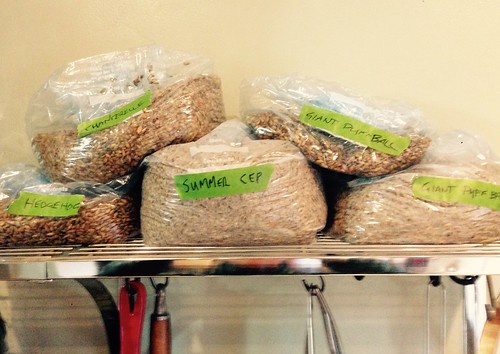The sequence of Sps1 starting up from arginine (R) nine to proline (P) fourteen intently matches the fourteen-three-three consensus sequence: R-S-X-(pS/pT)X-P [31] (Determine 4A). To examine Bmh1 expression in the SK1 pressure, we utilized an PG490 anti-Bmh antibody [35]. To take a look at the specificity of the anti-Bmh antibody in the SK1 pressure, we examined its potential to identify Bmh1 and Bmh2 using wild variety, bmh2D, BMH1-GFP, and BMH2-GFP that contains strains, which allowed us to distinguish amongst the two fourteen-3-three isoforms, as appending GFP at the Cterminus of the protein shifts the migration of an isoform (Determine 4B). with the more gradually migrating isoform corresponding to Bmh2 even though the more rapidly migrating isoform is Bmh1, as predicted by their predicted protein measurements (31 kDa for Bmh2 and thirty kDa for Bmh1). We subsequent requested if Sps1 could bind to Bmh1 and Bmh2, and located that we can co-immunoprecipitate Bmh1 and Bmh2 with SBP-Sps1 (Determine 4C). Even so, we do not detect an conversation questioned if 14-three-three localization was dependent on the existence of both isoforms. To answer this issue, we examined BMH1-GFP in a bmh2D history and we noticed no clear distinction in localization in sporulating cells (Figures S3 and S4). made fifty five.8% and 50.% spores respectively (each P,.01 in comparison to wild variety, Student’s t examination). Taken with each other, these final results advise a function for fourteen-three-3 proteins in sporulation efficiency (Table 3).
Because we see a defect in sporulation efficiency in cells carrying the sps1-T12A allele, we questioned if fourteen-three-3s engage in a position in sporulating cells. We examined strains that deficiency either BMH1 or BMH2 (LH980: bmh1D/bmh1D and LH981: bmh2D/bmh2D) and saw that both had slight reductions in sporulation effectiveness (Desk three). Cells lacking BMH1 form spores at 71.%, whilst cells lacking BMH2 form spores 70.8% of the time, in comparison to a wild variety worth of 80.six% (P,.02 and P,.03 respectively in contrast to wild sort, Student’s t examination). To examine no matter whether the slight sporulation  efficiency defect in every single bmh mutant was due to the missing 14-3-3 isoform, or the reduction in the complete quantity of fourteen-3-three genes, we examined sporulation in the doubly heterozygous LH979 pressure (bmh1D/+ bmh2D/+), which sporulated at seventy nine.six%, similar to wildtype (Table three). We also examined the outcomes of more reductions in 14-3-three gene dosage. Though a strain missing equally bmh1D and bmh2D was practical in the 20632361SK1 pressure track record, this pressure shown serious progress defects and was unable to enter meiosis (most likely due to the fact of an inability to successfully develop in YPA pre-sporulation medium, as 14-three-3s have been proven to be essential for growth in media containing acetate [33]), precluding our capacity to assay the sporulation effectiveness of the bmh1D bmh2D double mutant strain. Even so, we had been in a position to analyze sporulation in LH982 (bmh1D/ bmh1D bmh2D/+) and LH983 (bmh1D/+ bmh2D/bmh2D), and identified that the spore efficiency defect grew to become more severe as the gene dosage of fourteen-three-three was more diminished. Especially, we see that bmh1D/bmh1D bmh2D/+ and bmh1D/+ bmh2D/bmh2D Desk 4. SPS1 genetically interacts with BMH1 and BMH2.
efficiency defect in every single bmh mutant was due to the missing 14-3-3 isoform, or the reduction in the complete quantity of fourteen-3-three genes, we examined sporulation in the doubly heterozygous LH979 pressure (bmh1D/+ bmh2D/+), which sporulated at seventy nine.six%, similar to wildtype (Table three). We also examined the outcomes of more reductions in 14-3-three gene dosage. Though a strain missing equally bmh1D and bmh2D was practical in the 20632361SK1 pressure track record, this pressure shown serious progress defects and was unable to enter meiosis (most likely due to the fact of an inability to successfully develop in YPA pre-sporulation medium, as 14-three-3s have been proven to be essential for growth in media containing acetate [33]), precluding our capacity to assay the sporulation effectiveness of the bmh1D bmh2D double mutant strain. Even so, we had been in a position to analyze sporulation in LH982 (bmh1D/ bmh1D bmh2D/+) and LH983 (bmh1D/+ bmh2D/bmh2D), and identified that the spore efficiency defect grew to become more severe as the gene dosage of fourteen-three-three was more diminished. Especially, we see that bmh1D/bmh1D bmh2D/+ and bmh1D/+ bmh2D/bmh2D Desk 4. SPS1 genetically interacts with BMH1 and BMH2.
Presented the physical conversation in between Sps1 and the fourteen-3-three proteins, and as the two exhibit sporulation performance problems, we tested whether or not SPS1 genetically interacts with BMH1 and BMH2. Steady with a genetic conversation amongst the 14-33’s and SPS1, LH902 wild kind (80.six%), LH979 bmh1D/+ bmh2D/ + (seventy nine.six%), and LH965 sps1D/+ (eighty one.%) all show similar levels of sporulation, although LH984 (bmh1D/+ bmh2D/+ sps1D/+) confirmed a reduction in spore development, forming spores sixty seven.three% of the time (P,.03 in contrast to wild kind, Student’s t examination) (Tables three and 4).